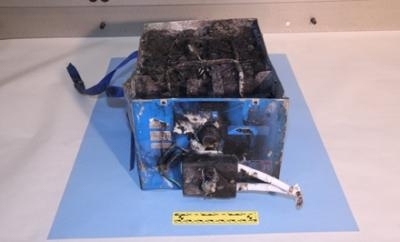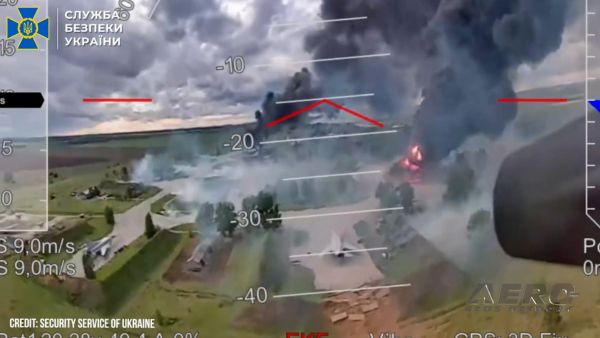Fri, May 23, 2014
Looks At The Power Cells As They Are Used In Aircraft Systems
The NTSB has issued a series of recommendations today related to the evaluation and certification of lithium-ion batteries for use in aircraft systems, as well as the certification of new technology.

The five safety recommendations, all addressed to the FAA, are derived from the NTSB’s ongoing investigation of the January 7, 2013, fire event that occurred in a lithium-ion battery on a Boeing 787 that was parked at Boston Logan Airport.
Investigators found that the battery involved in the Boston 787 fire event showed evidence not just of an internal thermal runaway but that “unintended electrical interactions occurred among the cells, the battery case, and the electrical interfaces between the battery and the airplane.”
The 12-page safety recommendation letter said that the processes used in 2006 to support the certification of the lithium-ion battery designed for the 787 were inadequate, in part, because there is no standardized thermal runaway test that’s conducted in the environment and conditions that would most accurately reflect how the battery would perform when installed and operated on an in-service airplane.
Further, the NTSB said that because there is no such standardized thermal runaway test, lithium-ion battery designs on airplanes currently in service might not have adequately accounted for the hazards associated with internal short circuiting.
In its examination of the challenges associated with introducing newer technologies into already complex aircraft systems, the NTSB said that including subject matter experts outside of the aviation industry “could further strengthen the aircraft certification process” by ensuring that both the FAA and the aircraft manufacturer have access to the most current research and information related to the developing technology.
To address all of these issues, the NTSB asked the FAA to do the following:
- Develop an aircraft-level thermal runaway test to demonstrate safety performance in the presence of an internal short circuit failure
- Require the above test as part of certification of future aircraft designs
- Re-evaluate internal short circuit risk for lithium-ion batteries now in-service
- Develop guidance for thermal runaway test methods
- Include a panel of independent expert consultants early in the certification process for new technologies installed on aircraft
The final report on the January 2013 Boston 787 battery fire investigation is estimated to be completed in the fall.
(NTSB image)
More News
From Oshkosh 2024 (YouTube Edition): Stunning Aircraft is a WWII Era Dream Come True William Presler, owner of Volar Avionics and Restorations, was given the opportunity to showcas>[...]
Aero Linx: USAF E-9A The E-9A is a twin turboprop used as a surveillance platform to ensure the Gulf of Mexico waters are clear of civilian boaters and aircraft during live missile>[...]
Pilot’s Failure To Maintain Clearance From The Water While Maneuvering In Low Visibility Conditions Analysis: During a local personal sightseeing flight, the pilot was maneuv>[...]
Landing Area Any locality either on land, water, or structures, including airports/heliports and intermediate landing fields, which is used, or intended to be used, for the landing>[...]
"I look forward to thoroughly evaluating Bryan Bedford to serve as FAA administrator, focusing on his qualifications, and the experience that will be needed to boldly modernize Ame>[...]
 Classic Aero-TV: Legacy of a Homebuilt P-38 Replica
Classic Aero-TV: Legacy of a Homebuilt P-38 Replica ANN's Daily Aero-Linx (06.08.25)
ANN's Daily Aero-Linx (06.08.25) NTSB Final Report: Avid Magnum
NTSB Final Report: Avid Magnum ANN's Daily Aero-Term (06.08.25): Landing Area
ANN's Daily Aero-Term (06.08.25): Landing Area Aero-News: Quote of the Day (06.08.25)
Aero-News: Quote of the Day (06.08.25)



